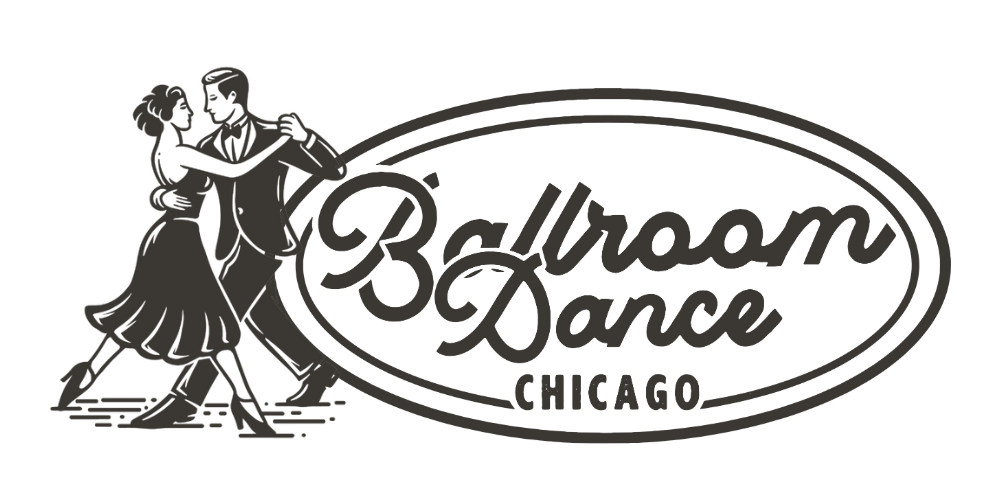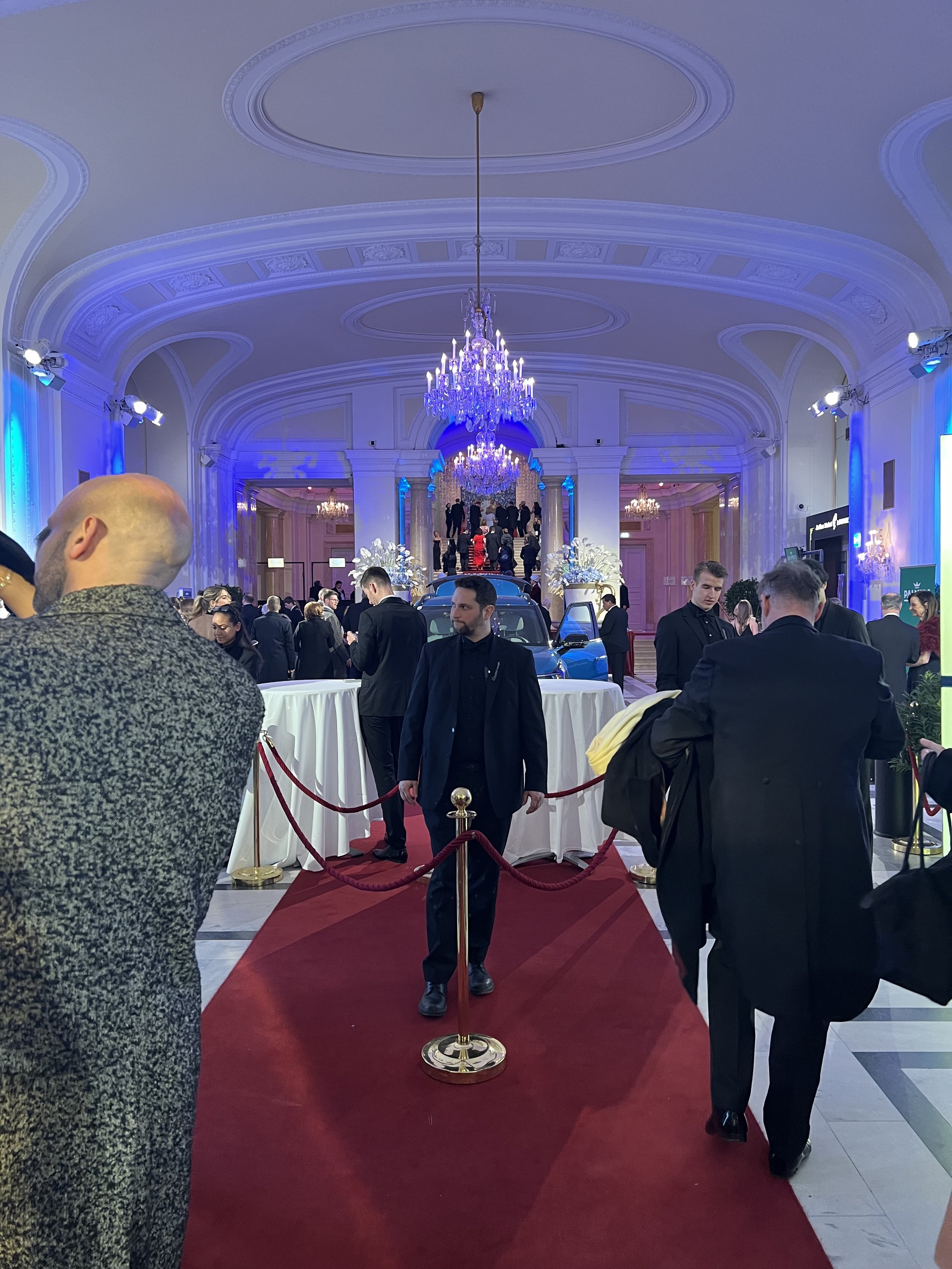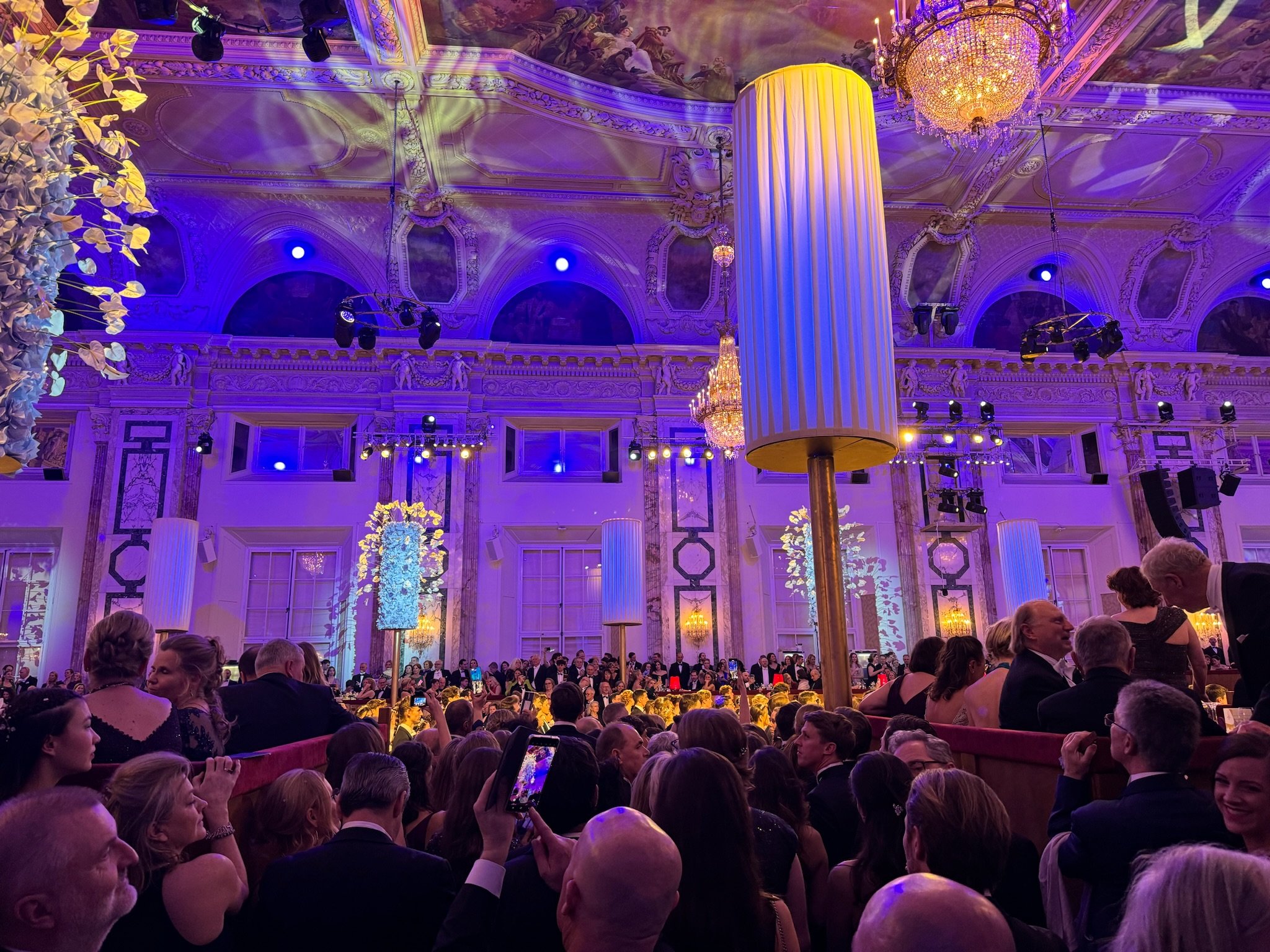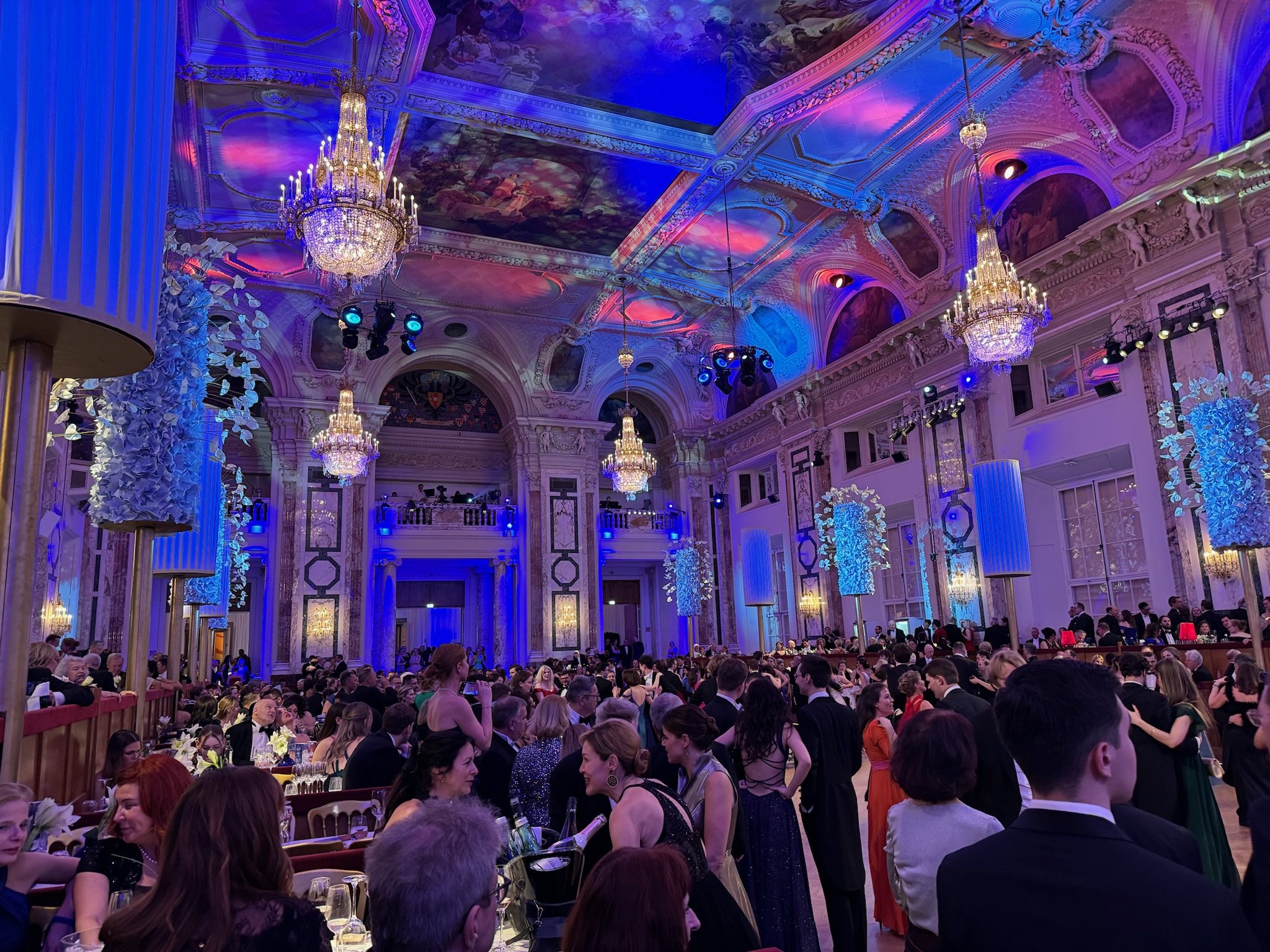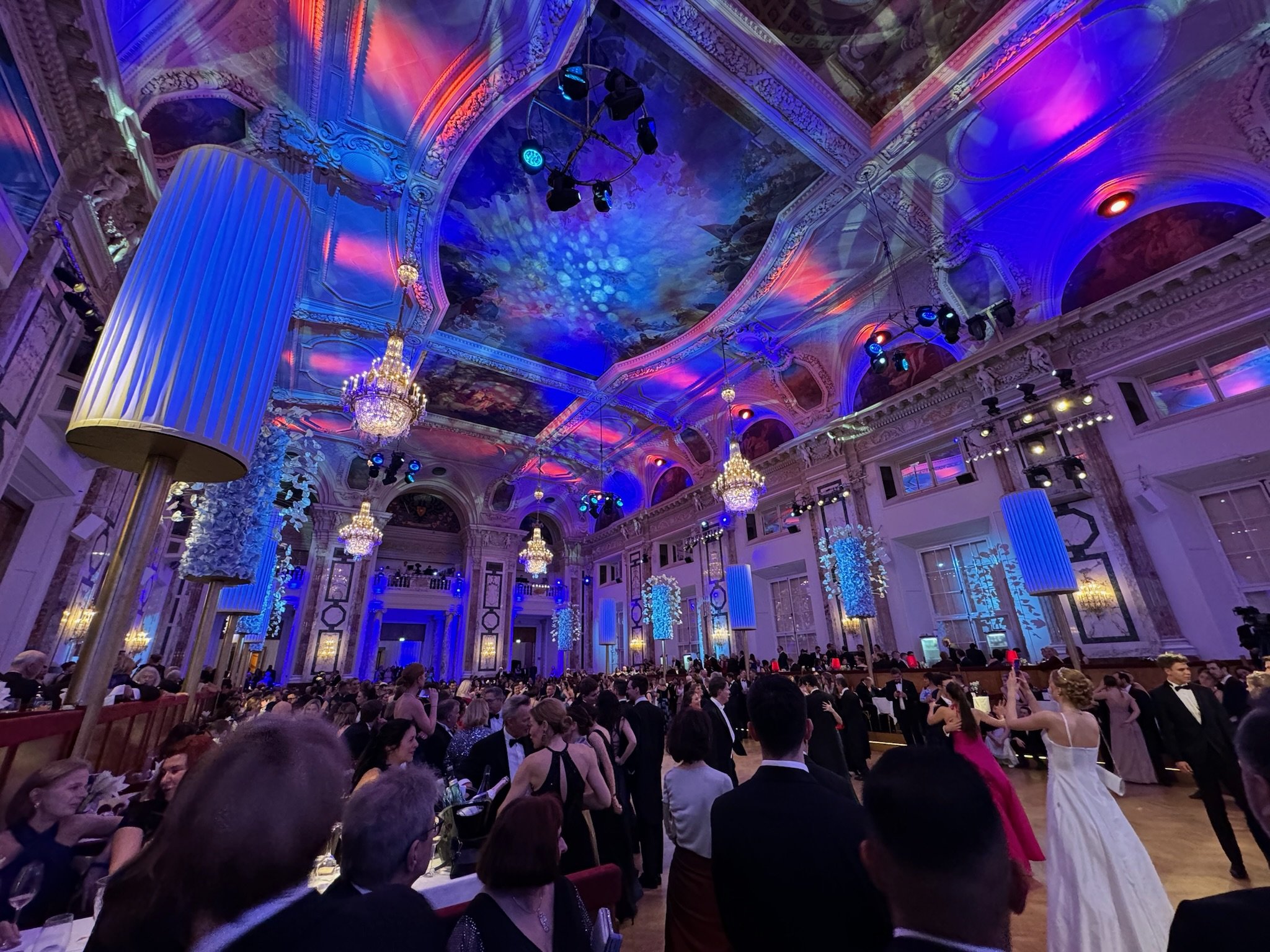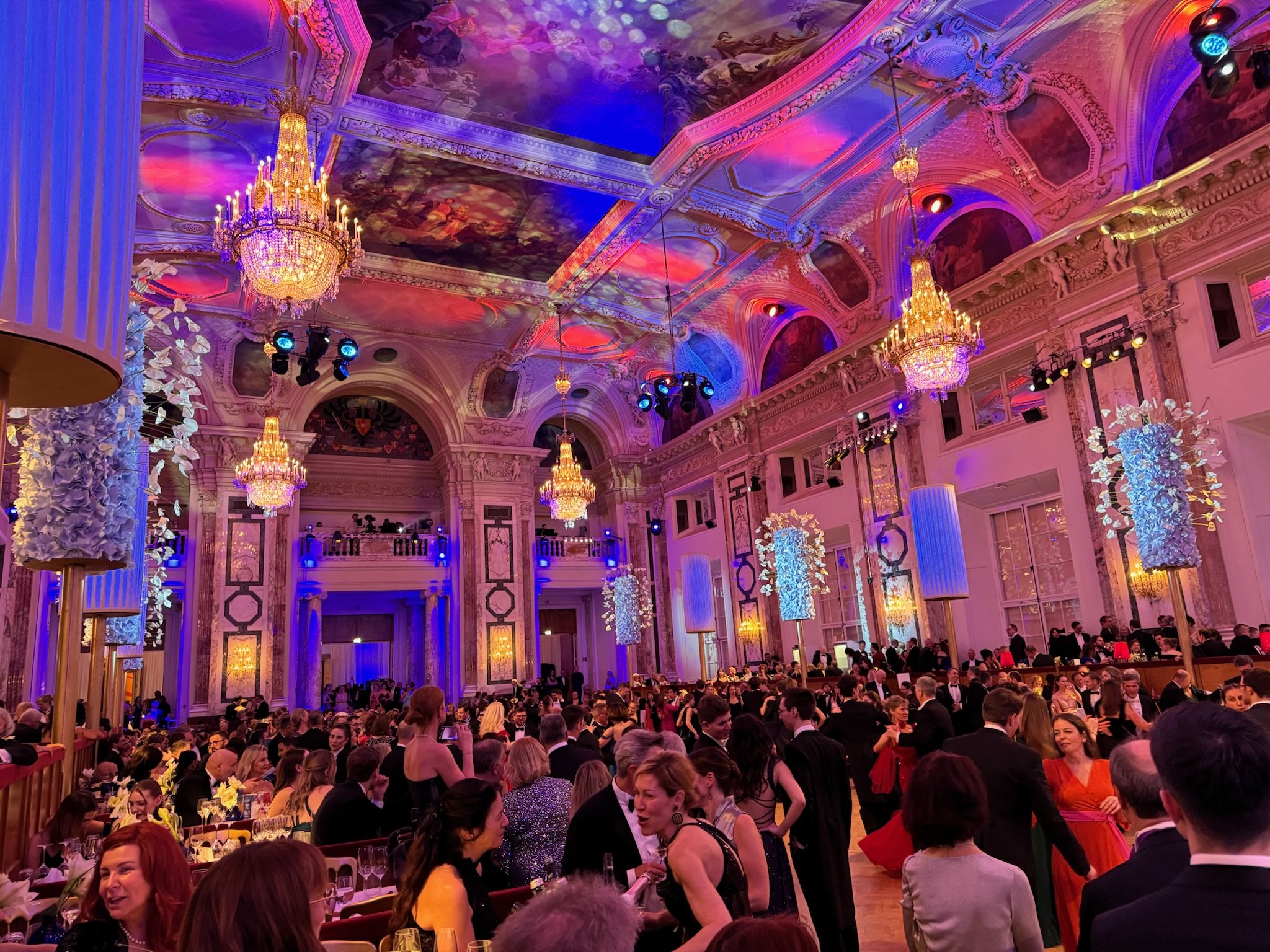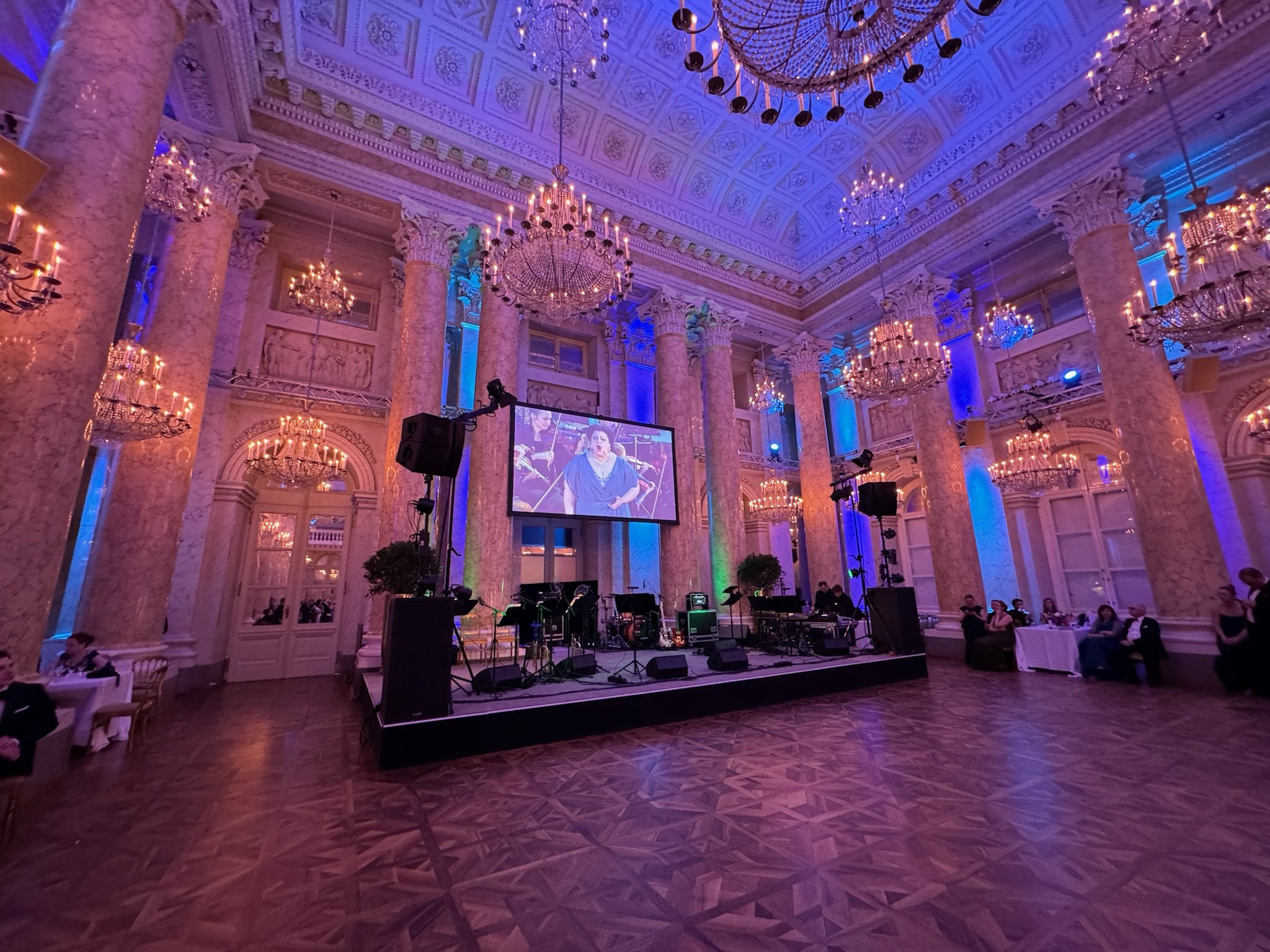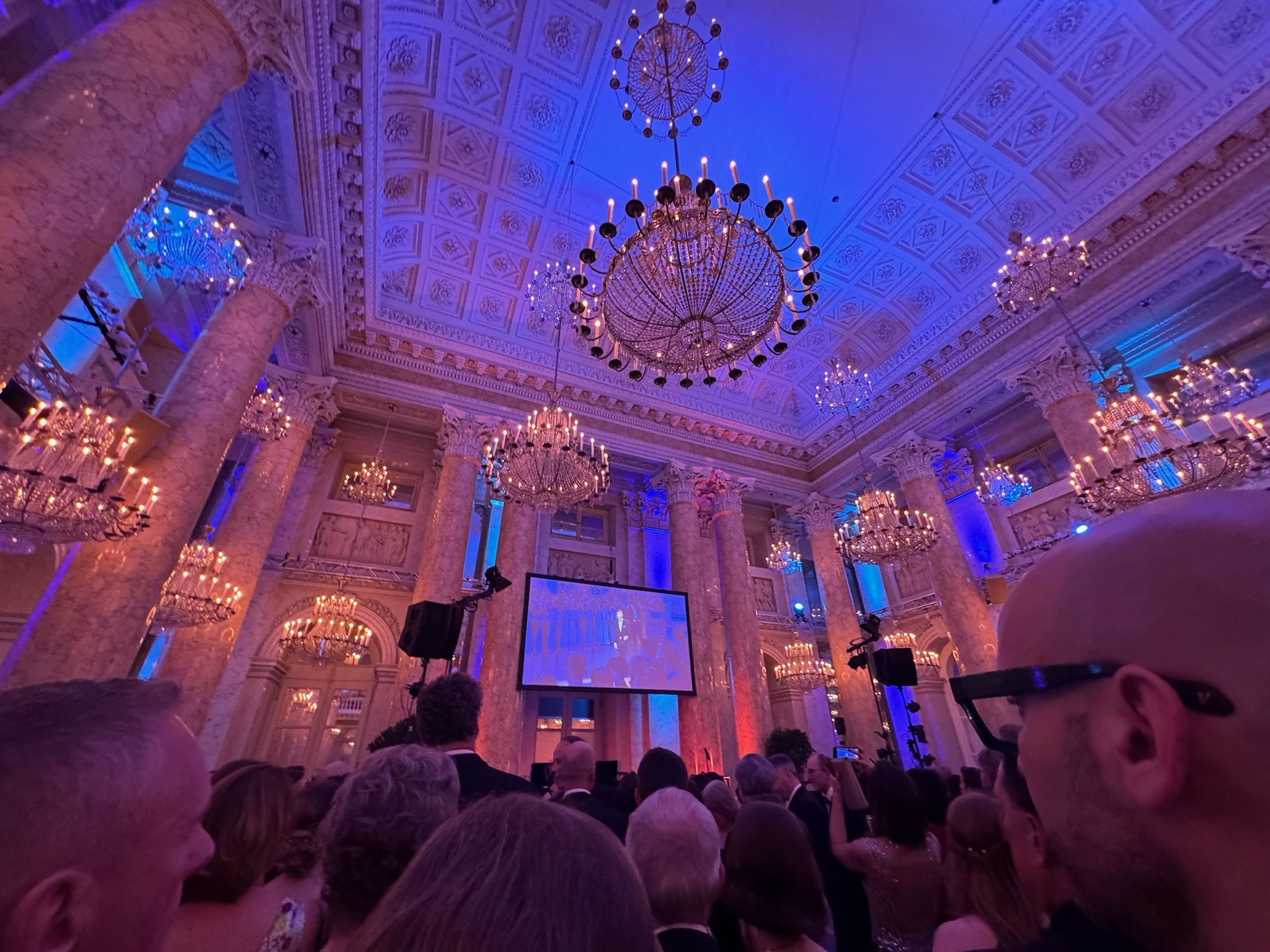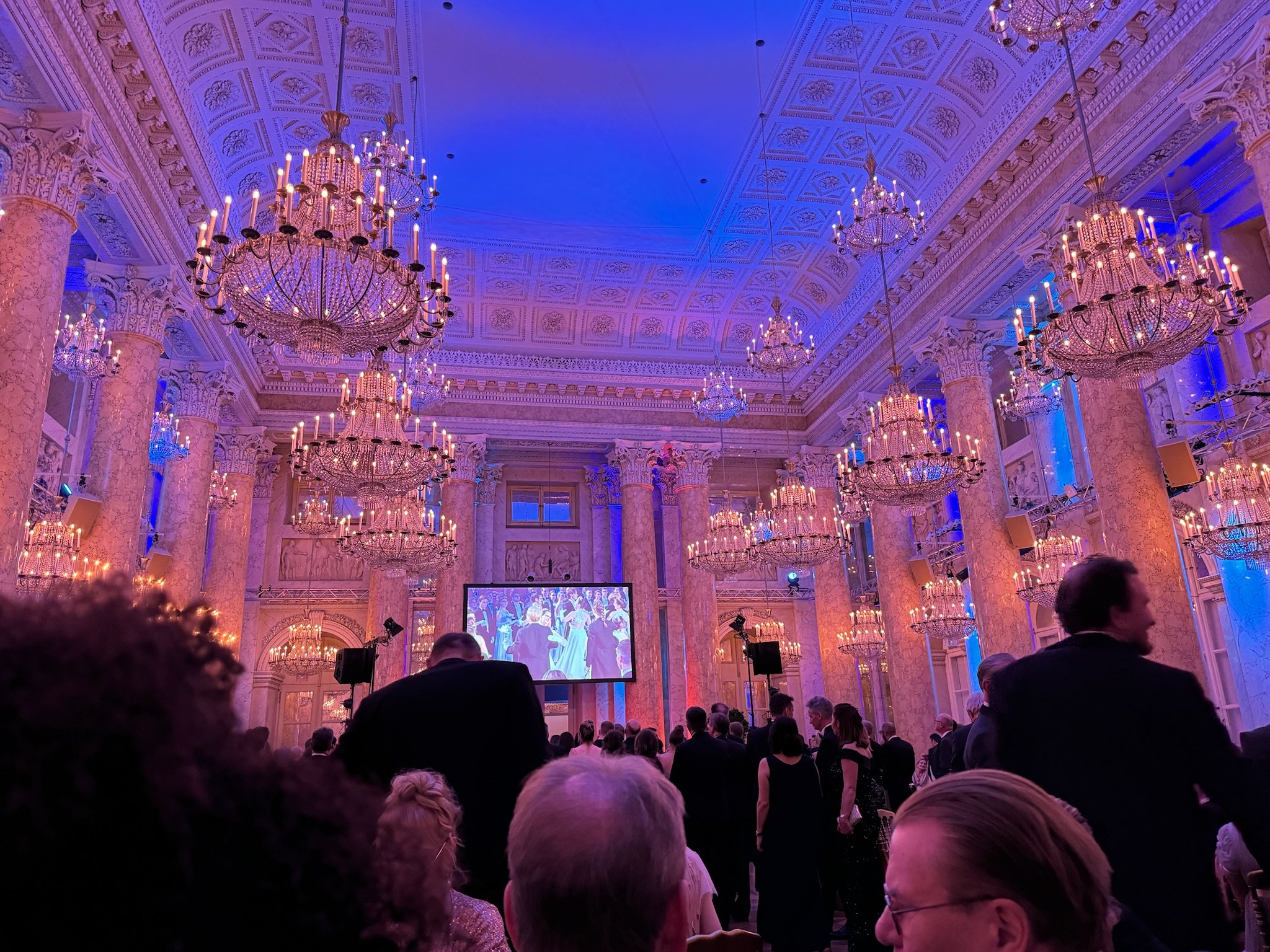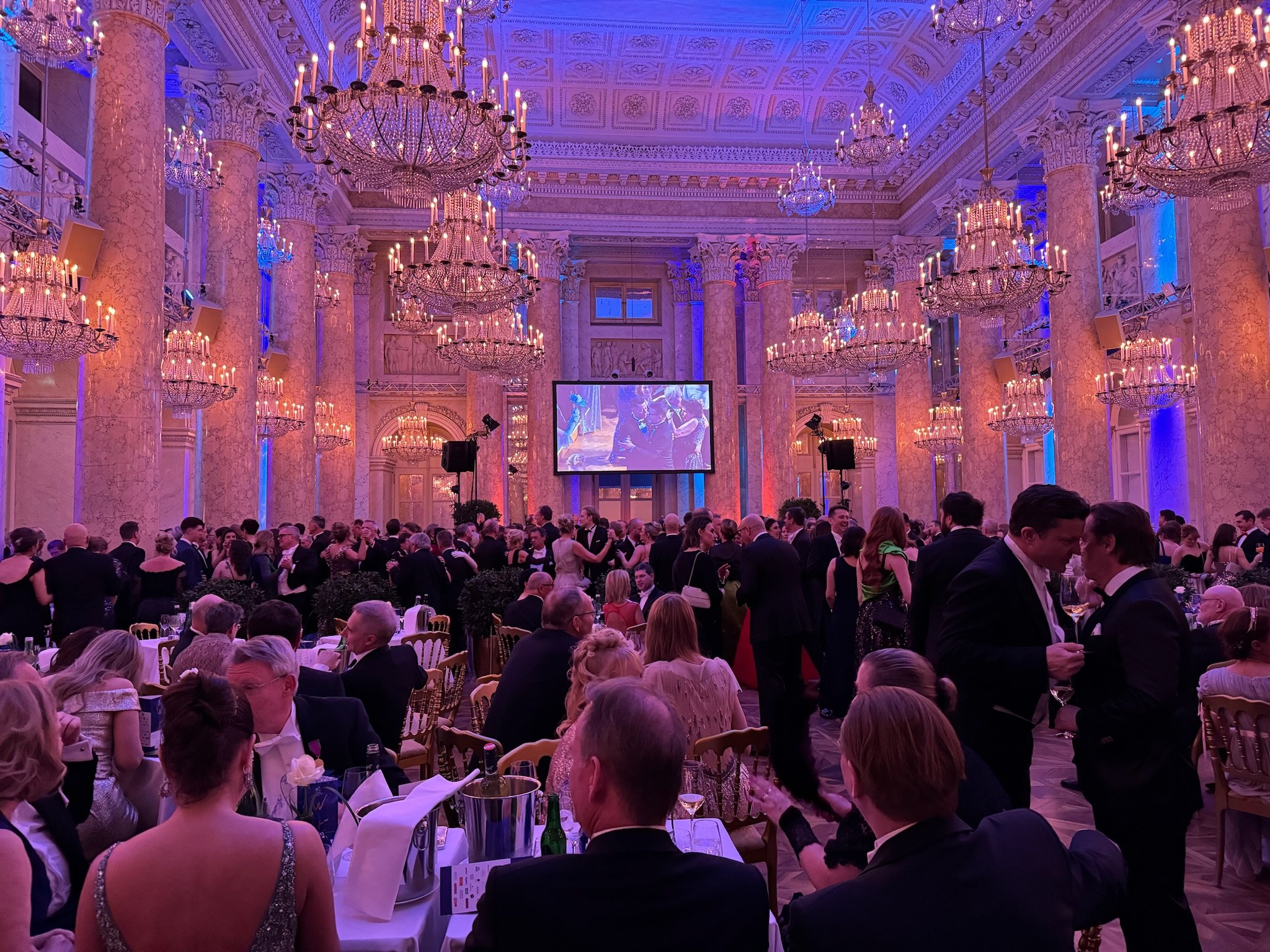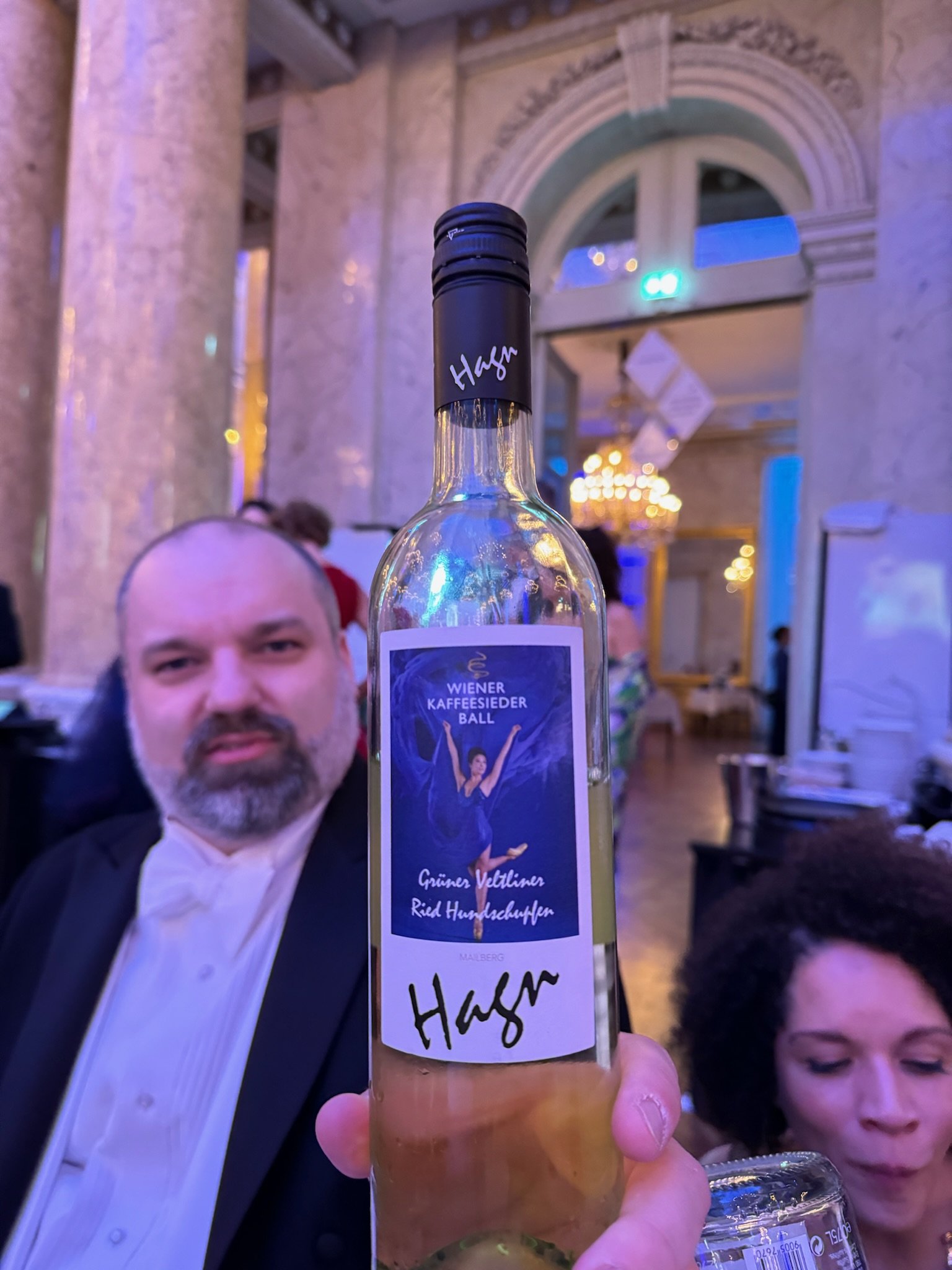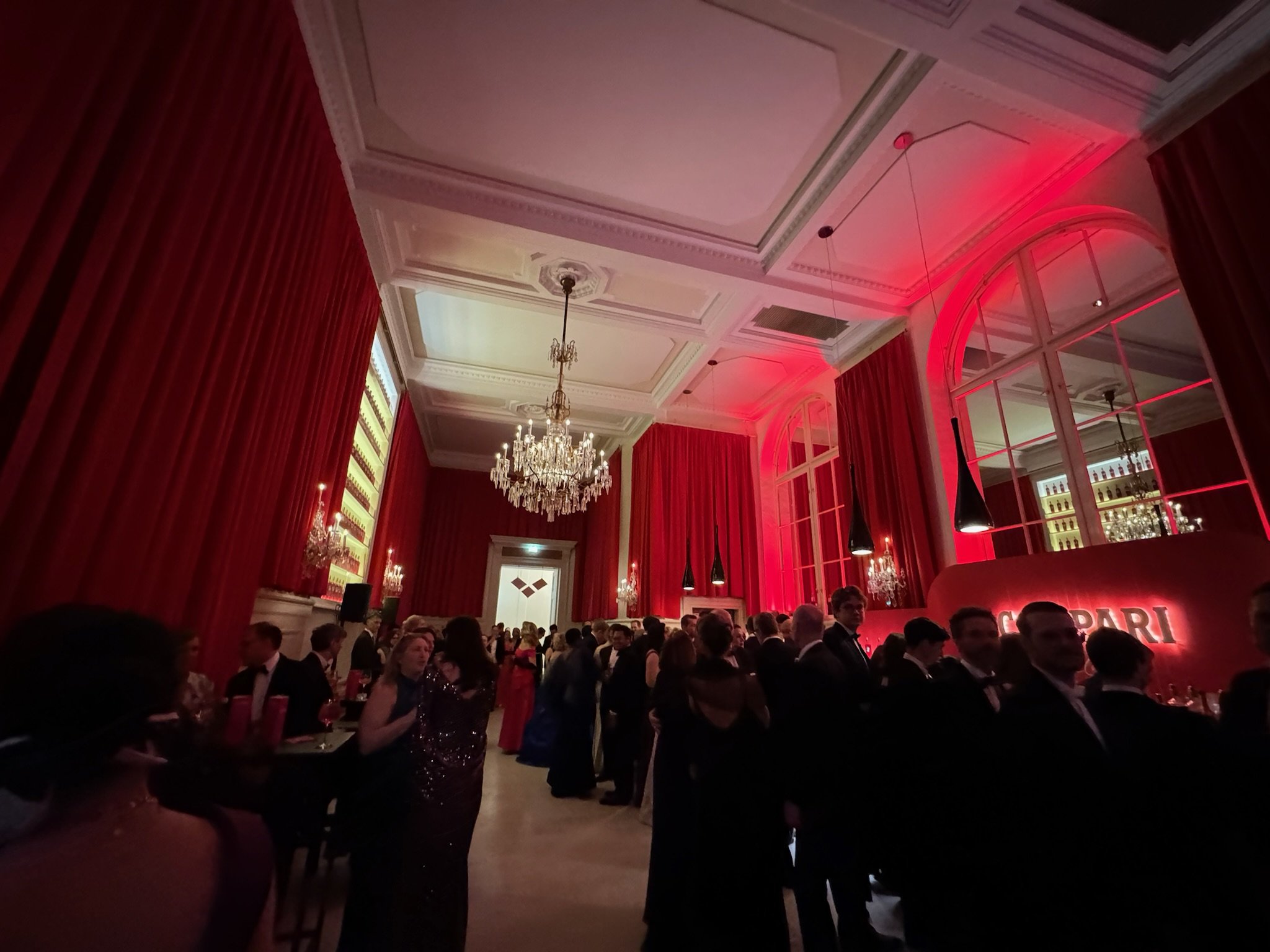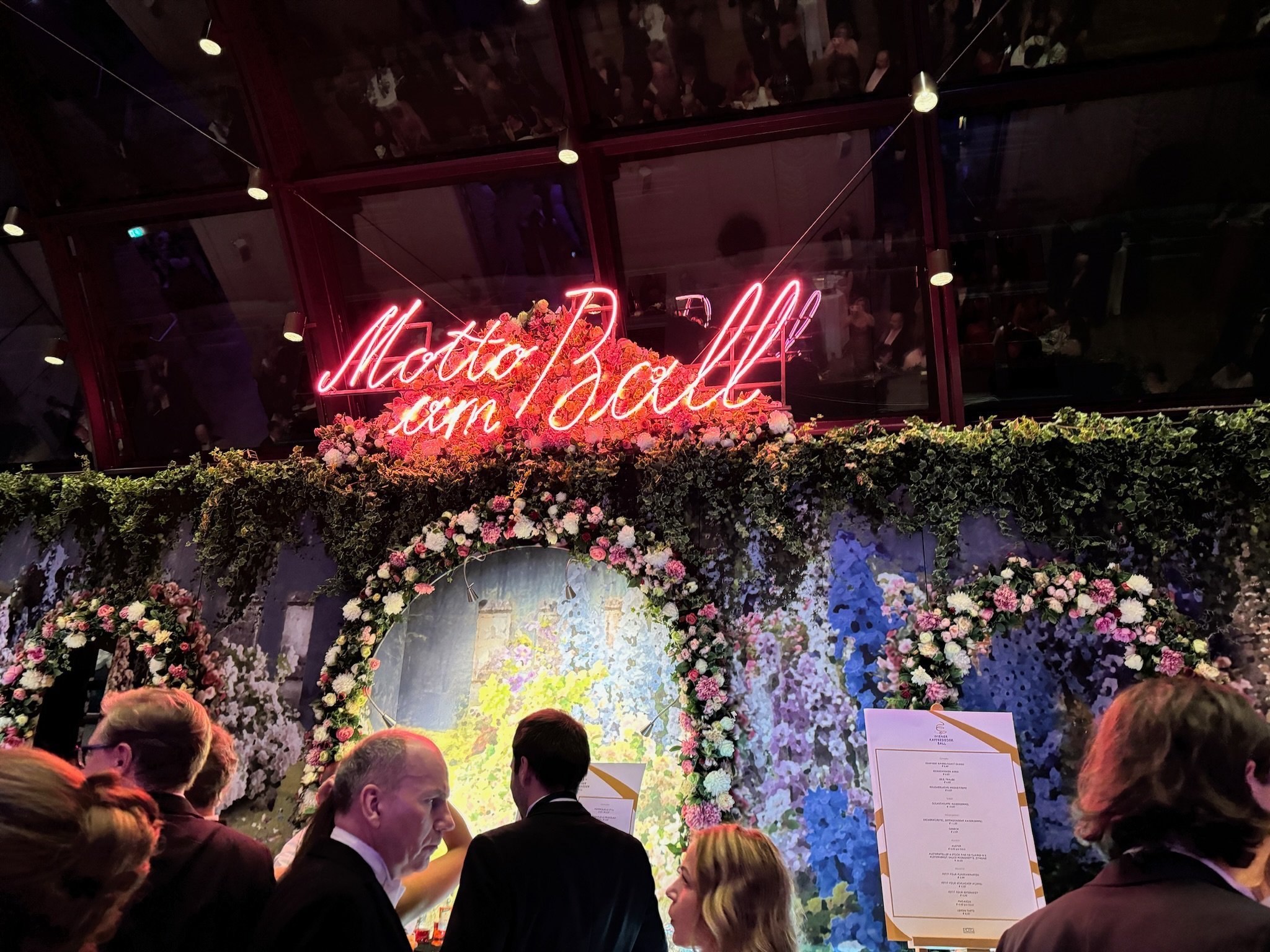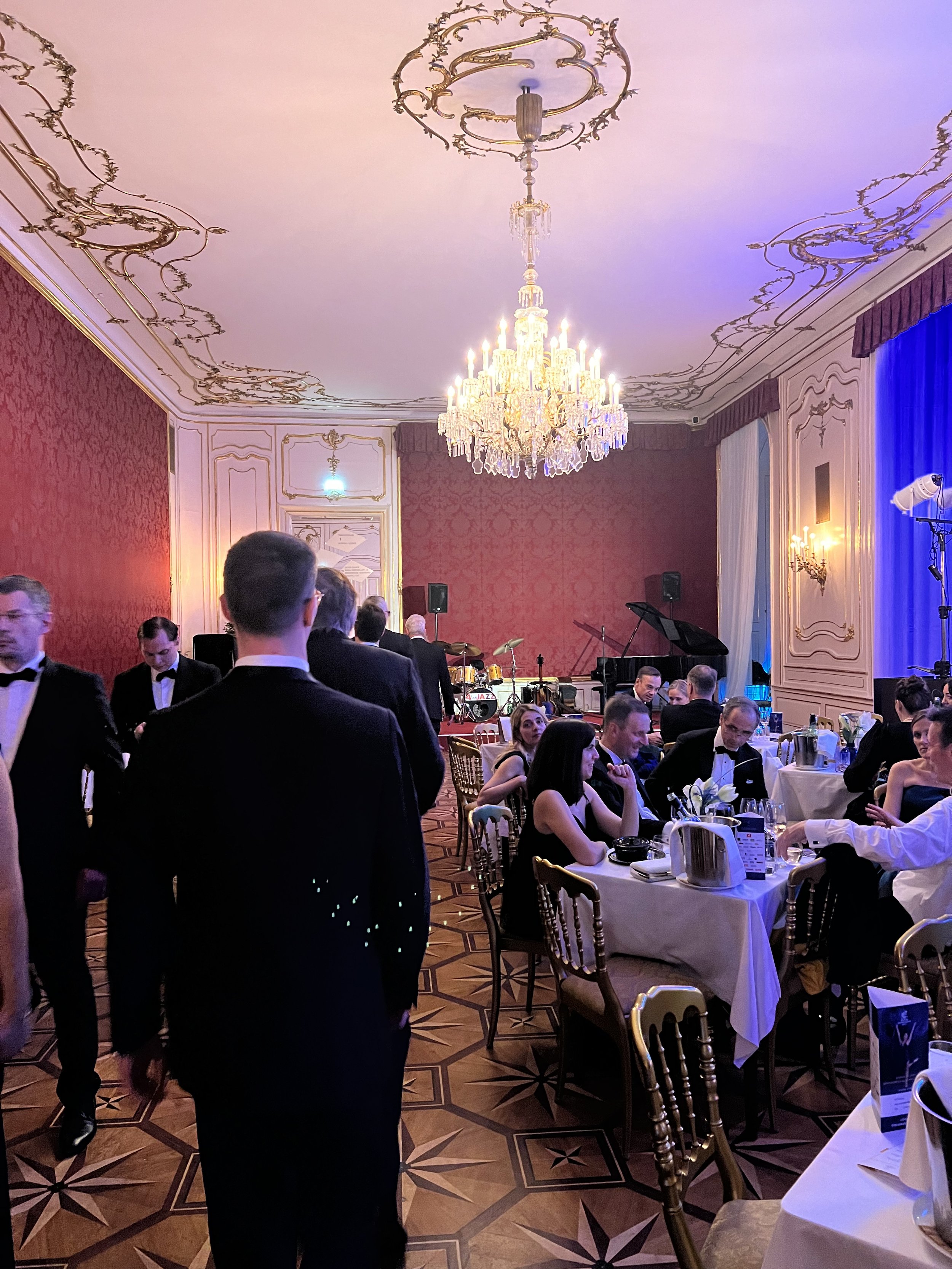Vienna 2024 Kaffeesiederball Recap
Our 2024 trip to Vienna is a wrap, but the memories and experiences shared by those who joined us for the Kaffeesiederball are already inspiring those who attended to plan for ball season 2025. Next year, we plan to attend two balls: Kaffeesiederball and then six days later the Opernball. Of course, no pressure to attend both. I anticipate most to choose one, but more on that in another blog.
This year's ball introduced a delightful twist, with live bands across all ballrooms serenading us with a diverse array of music genres, moving beyond the traditional Viennese waltz to encompass a broader musical spectrum. This change, which we warmly welcomed, added a fresh vibrancy to the evening, and we're eager to see it continue next year.
The Prelude to the Ball
Most attendees arrived on Tuesday or Wednesday for the ball on Friday. My wife, Mandy, arrived on the morning of the ball, took a nap, and then joined the festivities. This schedule suited her well since she was still adjusted to Chicago time, making the late-night celebration feel like 10 PM Chicago time, rather than 5 AM Vienna time. Personally, I prefer arriving earlier (particularly for those new to Vienna), like on Tuesday, as it offers the chance to immerse oneself in the city’s culture through exploration, dining, and discovery. An early arrival affords a few leisurely days to wander the city, perhaps on a self-guided tour.
The day I arrived I joined my friends Mark and Margarita for a drink at the Campari bar, went back to the hotel to prepare myself for dinner and then met them and our Austrian friend, Regina, to dine at Buxbaum Restaurant, a culinary gem in Vienna. This is a great first stop for those new to Vienna because Buxbaum expertly blends, both in cuisine and ambiance, traditional Austria with a modern twist. What stood out most to me was their obvious commitment to quality ingredients and their impeccable wine list.
Another restaurant of note that was new to me this trip was Vestibül. The evening before the ball, I dined there with my friends David and Kathy. Our dining experience was nothing short of a creative journey. Here, the essence of Vienna's regal culinary traditions is reimagined, turning time-honored dishes into unparalleled flavor adventures. The wine list was also to die for, chock-full of regional wines and aperitifs. I will definitely dine here during my next visit.
The Day of the Ball
On the day of the ball, we convened for a meal at the Palmenhaus, a charming restaurant nestled within one of the Hofburg's greenhouses. A noteworthy moment at dinner was when Alex and Nancy arrived late because Alex had forgotten his vest and suspenders at home (as in Chicago), essential for his white tie ensemble. Fortunately, a quick detour to Frack & Co — Vienna's premier destination for white tie attire, conveniently located a block from the palace — resolved the issue, with the shop swiftly outfitting him in the required attire. Additionally, they advised him that his watch was unsuitable for white tie, leading to its storage in Nancy’s purse for the evening. This incident exemplifies the exceptional service typical in Vienna, highlighting the city's ease for travelers, even those apprehensive about language and cultural barriers, thanks to the willingness of locals to assist and communicate in English.
After our dinner, a brief stroll took us to the Heldenplatz entrance of the Hofburg, where the ball's doors open to guests around 7:30 p.m. The ball, steeped in tradition, adheres strictly to dress codes, ensuring entry only for those correctly attired — floor-length evening dresses or ball gowns for ladies, and tailcoats, tuxedos, or full dress uniforms (with a bow tie, importantly, not a necktie) for gentlemen.
The check-in process went smoothly, benefiting from the splendid weather that made coats unnecessary for some. Guests typically check their coats and regular footwear, changing into dance shoes before ascending to the Kaffeesiederball's various rooms.
The official program commenced at 9 p.m. with a grand opening, introducing the guests of honor and the debutantes committee, followed by a welcoming address from the organizers. The evening's initial highlight was a series of performances, including a vocal interlude and a ballet, culminating in a traditional waltz by the Viennese Waltz Formation and the debutantes. Historically, the Elmayer Dance School's dancers inaugurate the Kaffeesiederball. Following the opening waltz and the invitation of "Alles Walzer," all dance floors and stages within the Hofburg welcomed guests to dance, with the entire ceremony and subsequent performances broadcasted live throughout the venue for all attendees to enjoy.
For reference, here’s a timeline of the 2024 Kaffeesiederball (which is pretty typical from year-to-year):
19:30 - Doors Open
20:30 - Performance in the Coffee House Forum featuring Wiener Blond & the Original Wiener Salon Ensemble
21:00 - Ballroom Opening with singing and ballet interludes
23:30 - Main Hall Performance: Rebecca Nelson & Julia Koci
00:00 - Midnight Performance: Jasmin White & David Kerber in the main hall
00:30 - First Audience Quadrille
1:00 - Performance: Rebecca Nelsen & Julia Koci in the Metternichsaal
2:00 - Late Night Concert: Ina Regen in the main hall
02:30 - Second Audience Quadrille
4:30 - Ball Conclusion
Not captured in this timeline is the existence of seven (or was it eight?) distinct halls, each alive with the sound of live music. These spaces present attendees with the unique chance to immerse themselves in a variety of musical landscapes throughout the night. Far from being confined to a single genre or style, the music selection spans a wide range, allowing guests to experience and celebrate diversity in both environment and sound. Whether one prefers the classic allure of a string quartet, the vibrant beats of a jazz band, or the modern rhythms of electronic music, these halls offer something special for every musical taste.
One of these halls, Zeremoniensall, got most of our attention as we had secured a table in advance. Although seating requires an additional fee, the investment is more than justified. As the second-largest ballroom within the venue and notably cooler than its counterparts, the Zeremoniensaal offers a comfortable retreat for those moments when one needs to step away from the festivities and recharge. The historic elegance of the Hofburg, while majestic, comes with the caveat of lacking modern air conditioning. This makes the availability of such a refreshingly cooler space even more valuable, providing a much-needed haven of relaxation amidst the grandeur of the ball.
An interesting observation from our experience was the universal wish among attendees that they had been more familiar with the quadrille. This traditional dance, a delightful interlude to the evening's modern entertainment and classical dancing, proved to be a challenge for many, as few were adequately prepared for its structured steps and sequences. The quadrille, with its playful energy and communal spirit, represents a unique aspect of the ball's tradition, offering a fun and engaging way to connect with others on the dance floor.
Recognizing this gap in our preparation, we have decided to incorporate specific classes focused on the quadrille for next year's attendees. This initiative aims to equip our guests with the knowledge and confidence to fully engage in every aspect of the ball, ensuring they can partake in this enjoyable break from the evening's other dances and entertainment.
Around midnight we started feeling a bit famished and sought out würstel - traditional Viennese sausages - which seems like a strange food to have at a ball, but everyone agreed that the sausages hit just the right spot and gave us the energy needed to push through to the end of the evening.
The evening's most unexpected highlight occurred when, after the main upstairs halls had closed, THE BAD POWELLS, a vibrant funk and disco band, took over the hall adjacent to the coat check. Their energetic performance kept the party alive until 4:30 in the morning, drawing a packed and lively crowd. For those planning to attend the ball, embracing the late-night festivities is essential. Ensure you're well-prepared by getting plenty of rest beforehand and considering a boost from B vitamins to keep your energy up throughout the night.
Insights and Recommendations from this Year’s stay
Where to Stay
As always suggested, we recommend accommodations within the Innere Stadt, within a few blocks of the State Opera House, a prime location for city exploration.
We stayed at the Hotel Sacher, directly opposite the opera house (about a block from Hotel Imperial). This area, especially near the Helmut-Zilk Platz adjacent to our hotel and opposite the Albertina Museum, is a popular starting point for many guided tours. Additionally, the Bitzinger Würstelstand, a famed Viennese hot dog stand, is a delightful nearby snack spot.
Hotel Sacher Wien comes with our highest recommendation. As Vienna's sole privately owned five-star hotel, it stands out not only for its exclusivity but also for the unparalleled quality of service it provides. The hotel's commitment to excellence is evident in every interaction, ensuring that each guest's stay is nothing short of exceptional.
Moreover, the Hotel Sacher Wien is renowned worldwide as the birthplace of the legendary Sacher Torte—a culinary masterpiece that epitomizes Viennese sophistication. This delectable chocolate cake, with its distinctive layer of apricot jam, is more than just a dessert; it's a symbol of the hotel's rich heritage and dedication to maintaining the highest standards of quality and luxury. Reflecting on our recent visit, the Sacher Torte served as the perfect 5 AM snack following the festivities of the ball. There's something incredibly special about enjoying such a renowned delicacy in the comfort of your room, at a hotel that prides itself on creating memorable experiences for its guests.
Austrian Wine
For enthusiasts and connoisseurs alike, delving into Austrian wine while in Vienna is an absolute must. Although visiting the vineyards directly may not always be feasible depending on the season, the city's dining establishments offer a splendid introduction to the nation's viniculture. Austrian wines, celebrated for their quality and diversity, take pride of place on many restaurant wine lists, with servers often possessing a deep understanding of each bottle's provenance and profile.
During my exploration, I made a point to visit Wein and Co Stephensplatz, the flagship store of a renowned wine retailer specializing in Austrian varieties. This visit was enlightening, not only for the breadth of selection but also for the exceptional value offered. Austria's wine regions produce some of the finest single vineyard wines, notable for their quality and uniqueness, many of which are surprisingly affordable and seldom found in the U.S. market.
Dining in Vienna
For those contemplating a visit to Vienna next year, be prepared to immerse yourselves in a food scene that's not only world-class but diverse and rich, extending far beyond the traditional Wiener Schnitzel and würst. This year, my culinary journey took me through an array of international cuisines—from exquisite Japanese fine dining and authentic Italian to flavorful Chinese—each experience surpassing the last without a single disappointment.
A daily highlight was my visits to Joseph Brot (about ½ block from the hotel), a local bakery where the bread quickly became a favorite of mine, arguably some of the best I've ever tasted. This discovery led me to realize that high-quality, organic products are not just a preference in Austria; they are the standard. Vienna sits at the heart of the organic movement, showcasing a city where most restaurants pride themselves on the use of organic, hyperlocal ingredients.
Several key factors contribute to Vienna's unique foodscape. The city's proximity to lush farmland allows for easy access to fresh, seasonal produce. There's a prevalent pride in Austrian-made products, emphasizing quality and authenticity. Moreover, there's a significant convergence of farmers, artisans, chefs, and retailers, all dedicated to a philosophy of low intervention in food production. This ethos, supported by a robust tourism and hospitality industry, fuels a gastronomic scene that's vibrant, dynamic, and sustainable.
These rich culinary offerings have made Vienna's gastronomic scene as iconic and unmissable as Gustav Klimt's "The Kiss," displayed in the city's Belvedere Palace. The fusion of traditional Austrian cuisine with international flavors, the emphasis on organic and locally sourced ingredients, and the warm, welcoming ambiance of Viennese dining spots together create an unforgettable experience for any food lover. Whether you're savoring a slice of Sacher Torte in a historic café or indulging in a meal at a Michelin-starred restaurant, Vienna promises a culinary adventure.
With our hearts and memories still basking in the afterglow of this unforgettable experience, we eagerly anticipate our next journey to Vienna in February 2025. Our excitement is not just for the exquisite dances, the elegant attire, and the enchanting music, but for the opportunity to share the vibrant essence of this city with more of our cherished dance community. Vienna, with its rich history, cultural depth, and culinary delights, offers an unparalleled backdrop for our dancers to explore, learn, and create memories that will last a lifetime. We invite you to join us on this adventure, to immerse yourself in the beauty of Vienna, and to discover the magic that this city has to offer. Together, we will step into a world where dance, culture, and camaraderie intertwine, creating experiences that are not only beautiful but transformative. So, let us look forward to February 2025, with open hearts and eager steps, ready to embrace all the wonders that await us in Vienna.
